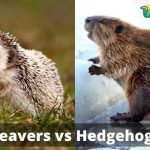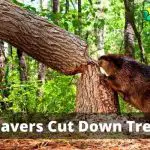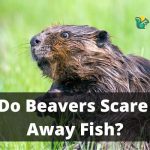Do Beavers Eat Wood? Know the Confusing Fact [Clarified]
While discussing beavers, the question “do beavers eat wood?” inevitably comes up. Beavers spend most of their time in the water, so it’s not surprising that people ask this question.

But beavers don’t eat wood! Instead, they use wood to make dams and build lodges. In spring, when river ice melts, beavers use the river to navigate through forests quickly. They then build dams to divert the water away from roads and homes. Beavers are known for their wood-chewing habits but don’t eat wood.
So why do they chew on wood? Read on to find out & this guide will help you to understand the food chain of beavers.
Do Beavers Eat Wood or Just Chew It?
There is much debate on whether or not beavers eat wood. While it is true that they will occasionally chew on wood, they are also believed to use the wood for building purposes. Beavers are known for their strong teeth and can break down the wood into smaller pieces.

But, beavers don’t eat wood. Generally they only chew them instead.
This following video shows that a beaver is chewing wood:
You may take a pregnant hamster from a store where it was housed alongside other animals and bring it home. When you discover baby hamsters in your hamster’s cage, you might be confused about what to do. You can read our article on “How Many Babies Do Hamsters Have?” if you have the same issue.
What Do Beavers Eat Besides Wood?
Not only do beavers build amazing dams, but they also eat a variety of things. Here are four things beavers eat:

- Leaves and other plant matter
- Grass
- Fish
- Caterpillar
- Aquatic plants

Why Do Beavers Chew Down Trees?
There are many reasons why beavers chew down trees. One reason is that beavers need a lot of wood to build their homes and dams. They also need wood to build their dams and other tools.

Your hamster can hibernate if you have one. A hamster in hibernation requires access to heat, light, and the smell of other hamsters when it awakens. Suppose you want to wake him up. You can read our guide on “How to Wake up a Hibernating Hamster?“
Do Beavers Eat Dead Trees?
No, they don’t eat dead trees. However, dead trees can provide the beavers with multiple resources, including wood, leaves, and bark, but there is no evidence that they consume them exclusively.
Frequently Asked Question
Why do beavers eat wood?
This is a mis-conception of people that beavers eat wood. Basically they chew on it just for the building purpose. Many people often get confused when they see a beaver biting a log or wood. For your information, they just bite the wood and chew them. And the reason behind chewing is to build a safe place for them.

What do beavers drink?
A beaver’s diet consists primarily of water, vegetation, and small animals. They drink constantly and can hold more water than any other mammal. They use their beaver dams to create reservoirs, which they use to keep the water clean and cool.
Does a Beaver Eat Fish?
One of the most common questions people ask about beavers is whether or not they eat fish. The answer to this question is somewhat complicated, as beavers will consume various aquatic and terrestrial food types.

Final Words
We guess we cleared your confusion about ‘do beavers eat wood?’ The Beaver eats a lot of foliage or woody debris, but wood is not their primary source of nutrition.
Most of their water intake comes from melting snow or rain, they obtain the bulk of their minerals from the soil, and much or most of their protein comes from insects. Also, the presence of wood in their diet does not inhibit their ability to build dams; wood is sometimes a preferred building material.




